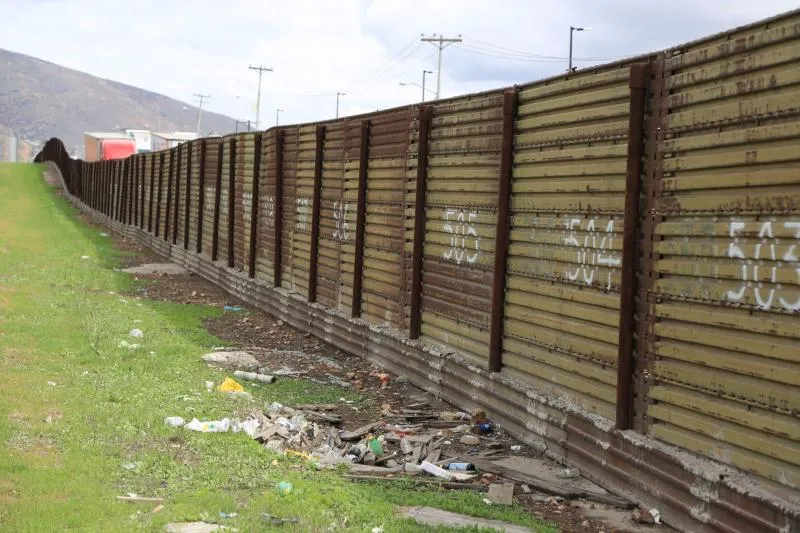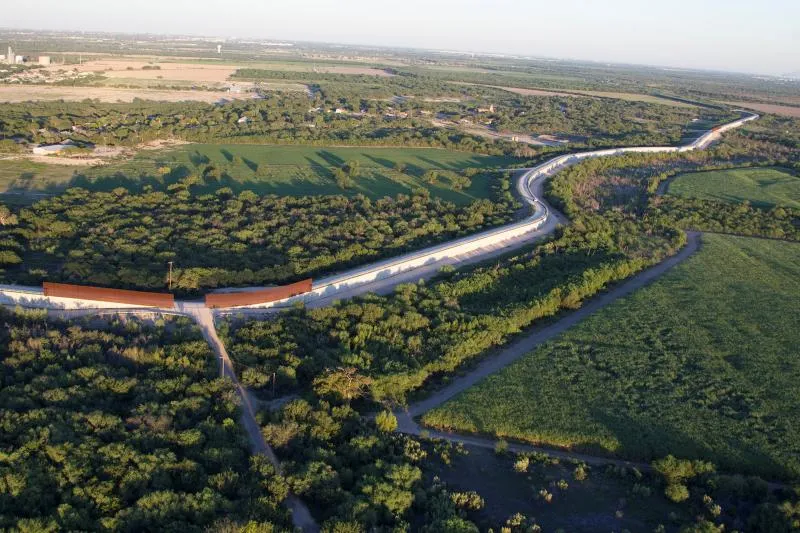Acting Deputy Commissioner announces wall projects in El Centro, San Diego, Santa Teresa, Rio Grande Valley

Acting Deputy Commissioner Ronald
Vitiello briefs the media on border
security and the status of border wall
construction along the U.S.-Mexico
border at U.S. Customs and Border
Protection headquarters in Washington
D.C., Friday. Photo by Glenn Fawcett
Construction of the border wall is underway, as several projects begin to take shape along the Southwest border. One project will begin within days, according to Ronald Vitiello, U.S. Customs and Border Protection’s acting deputy commissioner.
“We’re on track to replace 20 miles of primary vehicle barrier in Santa Teresa, New Mexico,” he told reporters during a Friday afternoon news conference in Washington, D.C. “Ground breaking is scheduled for early April.”
The projects span the Southwest border from San Diego to the Rio Grande Valley Sector in Texas.
In San Diego, 14 miles of outdated steel plate barrier will be replaced with a bollard structure—hollow steel beams filled with concrete and steel rods. The bollard design provides agents with needed visibility into Mexico while improving protection.

were used to construct the primary
pedestrian barrier on San Diego’s border.
Without the ability to see through it,
the mats hinder agent safety. They’re
also easily breached or scaled. Fiscal
Year 2017 enacted appropriations
provided funding to replace 14 miles of
this legacy barrier with a more durable,
higher, see through wall design and
using steel bollards.
At least two miles of the border barrier in Calexico, California, is already being replaced with 30-foot bollard wall along with four miles of bollard wall in El Paso. Closing gaps along the border in the Rio Grande Valley Sector is also part of the border wall project.
“We’re building 35 new gates along a stretch of 55 miles of existing border wall.” Vitiello said. Construction is tentatively scheduled to start in October 2018.
Along those areas, the barrier is further away from the Mexican border. The gates close gaps in the wall while permitting the U.S. Border Patrol, emergency vehicles and landowners with property on the southern side of the barrier access through an automatic gate.
The Rio Grande Valley Sector will also benefit from 25 miles of new levee wall along the Rio Grande River and eight miles of bollard wall in Starr County, Texas. When fully funded, about 1,000 of almost 2,000 of the U.S. border with Mexico will have border wall and other critical infrastructure.

FY 2017 Enacted Appropriations
provided funding to construct 35 gates
to close gaps in the existing 55 miles
of levee and border wall in the Rio
Grande Valley Sector. Pictured is an
area near McAllen, Texas, from
September 2013. Photo by Donna Burton
Vitiello thanked the Trump Administration for their leadership and commitment to border security. He also recognized Congress for their $1.6 Billion “down payment” on the border wall system, which was included in the Consolidated Appropriation Act of 2018. The funding provides for the construction of approximately 100 miles of new border wall.
Over the years, walls have proven their worth, said the acting commissioner. “Our agents and officers have decades of experience and perspective, and they know our operational needs,” he said.
According to Vitiello, the U.S. Border Patrol, from Sector Chiefs to Border Patrol agents in the field, have been vocal about their need for effective barriers that impede and deny the entry of illegal aliens and contraband.
“The truth is, walls work,” Acting Deputy Commissioner Vitiello said. “The data show it, and our agents know it.”

